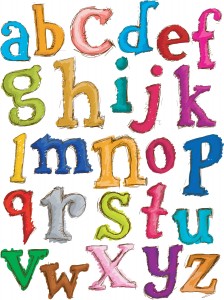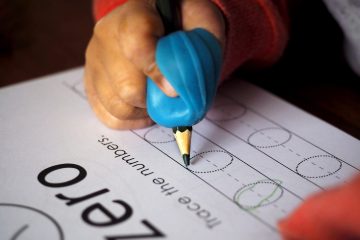In our last post we discussed phonemic awareness and it’s critical importance to learning how to read. This week we will discuss phonics, which the Oxford Dictionary defines as, “a method of teaching people to read by correlating sounds with letters or groups of letters in an alphabetic writing system.” So, phonics further builds upon the foundation of phonemic awareness. Once your little one begins to correlate letters with sounds, they will begin building an important foundation for reading! Today Red Apple Reading shares several activities that will help your kiddo become a phonics master!
Beginning Activities
- Practice letters with pictures: Use letters with pictures that contain the letter sound to demonstrate sounds to your child. For example, show your child a flash card with a picture of a dog on it next to the letter d, and say the word “dog” out loud, emphasizing the /d/ sound.
- Point out letters: Point out letters within words in books, around the house, on signs, and so on, and explain the sounds those letters are making within the words. This phonics I-Spy bottle from The Imagination Tree is a fun way to sharpen this skill!
- Introduce your child to phonics-related online media: Let your child watch videos that demonstrate letter-sound relationships, and introduce your child to interactive phonics activities. If you haven’t already, now’s a great time to sign up for your free 14 day trial of Red Apple Reading.
Intermediate Activities
Once your child becomes more comfortable with the sounds that letters make, it’s time to help her connect the letter-sounds into words. Some of the best words to start with are CVC (consonant-vowel-consonant) words. These are phonetically regular words (words you can sound out, as opposed to words that include silent or unusually pronounced letters) like “mat,” “big,” and “get”.
- Buy or create CVC word puzzles: Find a commercially produced product, or simply create your own puzzle by writing out a CVC word and then dividing it into separate letters. Puzzles that include a picture of the word can help children connect the word and the letters to meaning. This cute nuts and bolts activity from No Time for Flashcards not only helps your kiddos with their CVC words, but it also develops their fine motor skills!
- Make a Letter Wall: Designate a spot in your home—perhaps the refrigerator door, or a bulletin board—and make it into a letter wall. Place magnetic or adhesive letters on the wall, and let your child create his or her own CVC words by moving the letters around. Check out No Time for Flashcards’ spin on this idea using a cookie sheet and letter magnets.
- Play writing games: If your child has begun to write some letters, you can begin to let him practice encoding (i.e. using knowledge of letters and letter sounds to write words). Play guessing games such as asking your child to write the letter that comes at the beginning of the word “bed.”
Advanced Activities
As your child’s developing reading skills continue to grow, you can build on these activities to include more advanced objectives. You can use many of the same resources as before such as flash cards, online activities, puzzles, but expand the material to include new and more complex aspects of phonological awareness:
- Digraph and blend activities: Digraphs are two or more letters grouped together but making a single sound, for example “th” and “ch.” Blends are two or more consonants grouped together but making separate sounds, for example “br” and “gl.” There are several activities your child can do to practice recognizing digraphs and blends. Download this free, adorable diagraph activity from Make, Take, and Teach!
- Blending and substitution games: Once a child can comfortably blend the letters “c” “a” “t” into “cat,” you can progress to more complicated words. For example, give your child the letters “f” “r” “o” “g” and let him or her practice blending those letters into a word. You can also introduce substitution activities, for example asking, “What happens when you take away the ‘r’ in “frog?”
- Segmenting activities: Working in the opposite direction as the blending activities, you can have your child start with a whole word, such as “block,” and break it into pieces. You can use the pieces to make a puzzle, or a flipbook with “-ock” at the end, or create a list of rhyming words (sock, rock, dock).
We hope these ideas will be helpful as you help your little one work on her phonics! Leave us a comment telling about your favorite phonics activity!



